When you start an eCommerce business, the most important question you need to answer is:
“How will I make money?”
And often, the answer to that question lies in your business model.
There are various eCommerce business models and finding the perfect one for your business will help you on the way to success.
By defining your business type you can figure out:
-
Who are your customers?
-
What are you selling?
-
How many products are you selling?
-
How much are you selling it for?
-
How will you deliver your product to customers?
-
Where will you get your products from?
And more…
Throughout this article, we’ll help you to better understand the types of eCommerce business models out there, and guide you through some major decisions you’ll need to make to build a successful eCommerce business.
%(tableofcontents)
Who Are Your Customers?
There are four main types of eCommerce business model types to choose from:
-
B2B: Business-to-Business
-
B2C: Business-to-Consumer
-
C2C: Consumer-to-Consumer
-
C2B: Consumer-to-Business
B2B: Business-to-Business
A B2B model is when your business sells to another business. A company selling computers and IT products will often sell to other businesses, rather than individual customers.
ZipGrow is a B2B eCommerce business that sells urban farming products to aspiring and established farmers.
There’s a huge market globally for B2B eCommerce, with the industry expected to surpass $7.66 trillion in gross merchandise volume (total value of merchandise sold over a given period of time) in 2017, up from $5.83 trillion in 2013.[*]
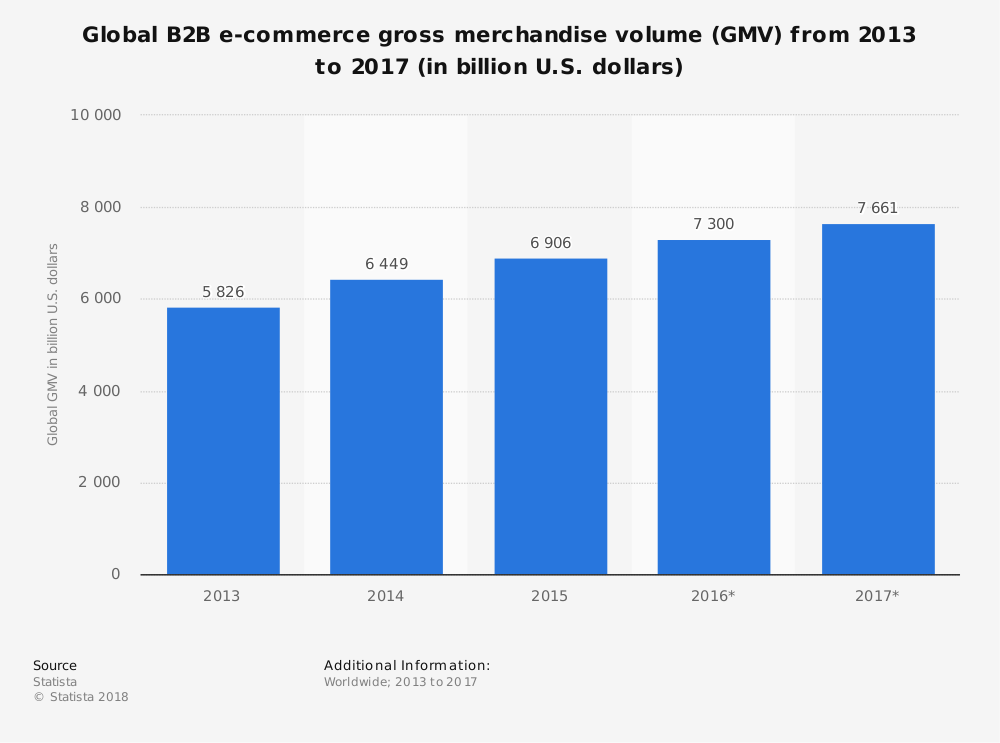
The revenue generated by B2B eCommerce is more than 200% larger than B2C eCommerce sales as the below graphic from Shopify illustrates:[*]
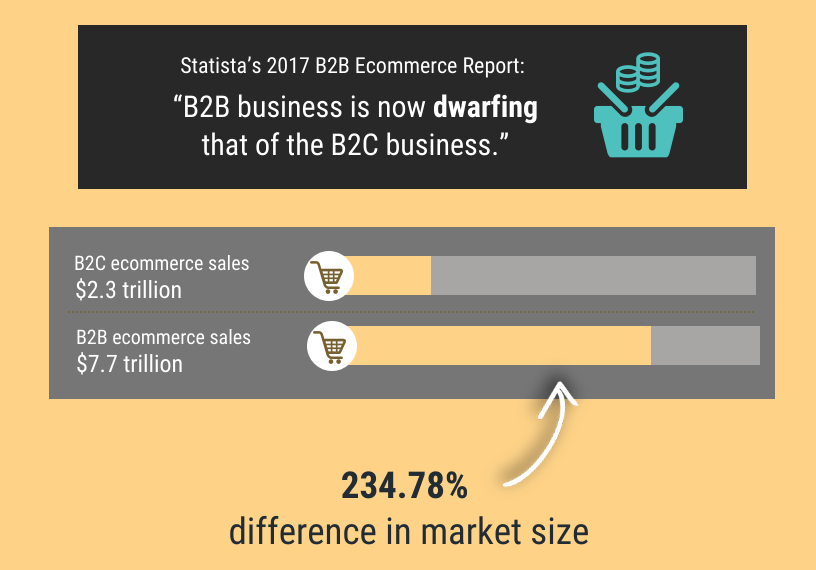
The Pros Of B2B Ecommerce
-
Potentially large orders: With B2B you’re more likely to receive bulk orders than B2C. An office manager searching for new chairs is likely to purchase chairs for the whole office rather than just one.
-
High purchase intent: B2B searchers have high purchase intent and will rarely just “browse” as many B2C customers do. When a B2B purchaser searches for a product, it’s because they’re ready to buy.
-
Steady growth: As we mentioned, 90% of B2B merchants expect their eCommerce sales to increase in 2018. This could be largely due to the fact that B2B eCommerce is often less susceptible to huge fluctuations due to long-term relationships, sales contracts, and business forecasting.
The Cons Of B2B Ecommerce
-
Longer sales cycles: There are far more customers than businesses, meaning there are fewer potential customers in the B2B space. B2B sales cycles are typically longer, too with potential customers often discussing quotes and costs with multiple companies before making a purchase.
-
Competing on price: In the B2B space, cost is quite often a deal maker or breaker. You may need to spend more time and energy negotiating with suppliers (and sales prospects) and ensuring you’re priced in line with your competitors to make a sale.
-
Customer influence: In B2C, people don’t often make requests for discounts or customizations. But in the B2B space where bulk buying is common, you might face more requests to alter your product offerings to provide a business with exactly what they want.
B2C: Business-to-Consumer
B2C businesses tend to be what most people think of when they picture an eCommerce company. In B2C, the business is selling directly to the customer who will use their product.
There are plenty of uber-successful B2C eCommerce businesses out there. From large, multinationals like Amazon to smaller, niche eCommerce brands like Viberg who sell men’s shoes directly to customers.
In 2017, B2C eCommerce sales worldwide amounted to $2.3 trillion and by 2021 that figure is projected to grow to $4.88 trillion:[*]
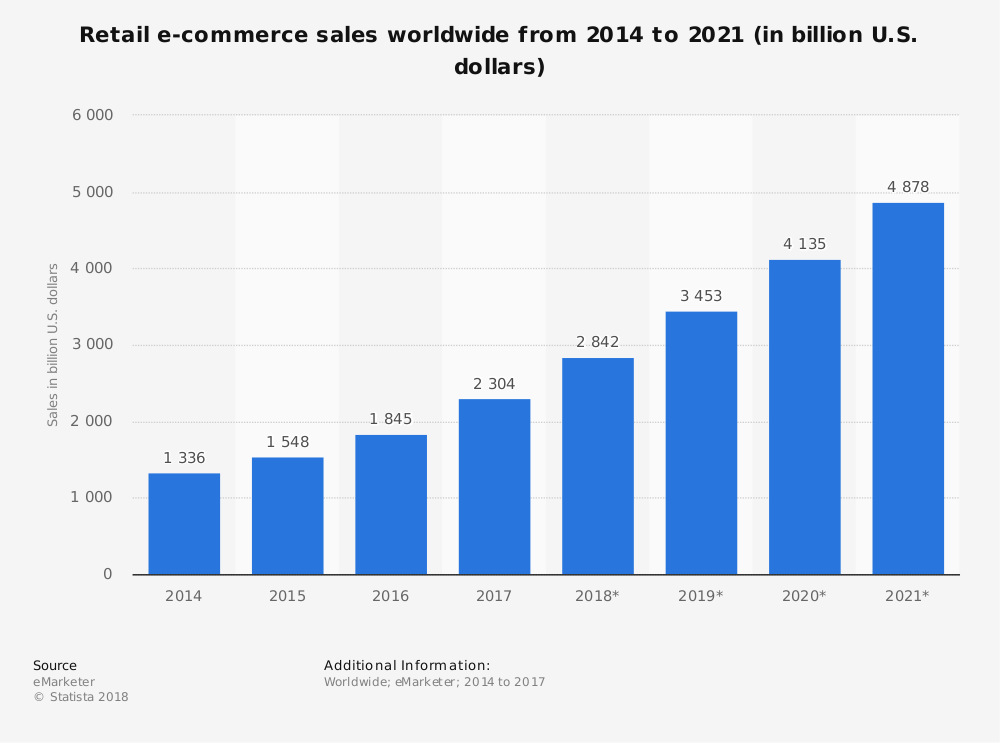
The Pros Of B2C Ecommerce
-
Low startup costs: Starting a B2C eCommerce can be done for $50 using the bare necessities; all you need is an online store (which can be set up for ~$29/month) and some products or services to sell.
-
No-touch sales: In the B2C space, you can make sales without ever having to send quotes or speak with purchasing departments. You might get occasional customer service or pre-purchase messages, but generally, B2C sales will be quicker and easier than B2B.
-
Make sales 24/7: With eCommerce, you don’t need to worry about opening hours. Once your store is established, you can make sales any time of day — even while you’re sleeping.
The Cons Of B2C Ecommerce
-
Highly competitive: Nearly every niche is served by multiple — if not hundreds — of eCommerce stores.
-
Customers expect fast delivery: Due to the rise of Amazon Prime (and other next — or even same-day delivery services), customers now expect extremely fast delivery. A study by Ampersand found that 52% of customers prefer next day delivery while 12% prefer same day delivery.[*]
C2C: Consumer-to-Consumer
In C2C, customers sell products directly to other customers, and the sellers tend to rely on other businesses to facilitate transactions and market products.
Platforms like eBay and Etsy enable customers to directly sell products to other customers. These platforms that facilitate C2C sales tend to make their revenue by charging a small fee to users who post items for sale.
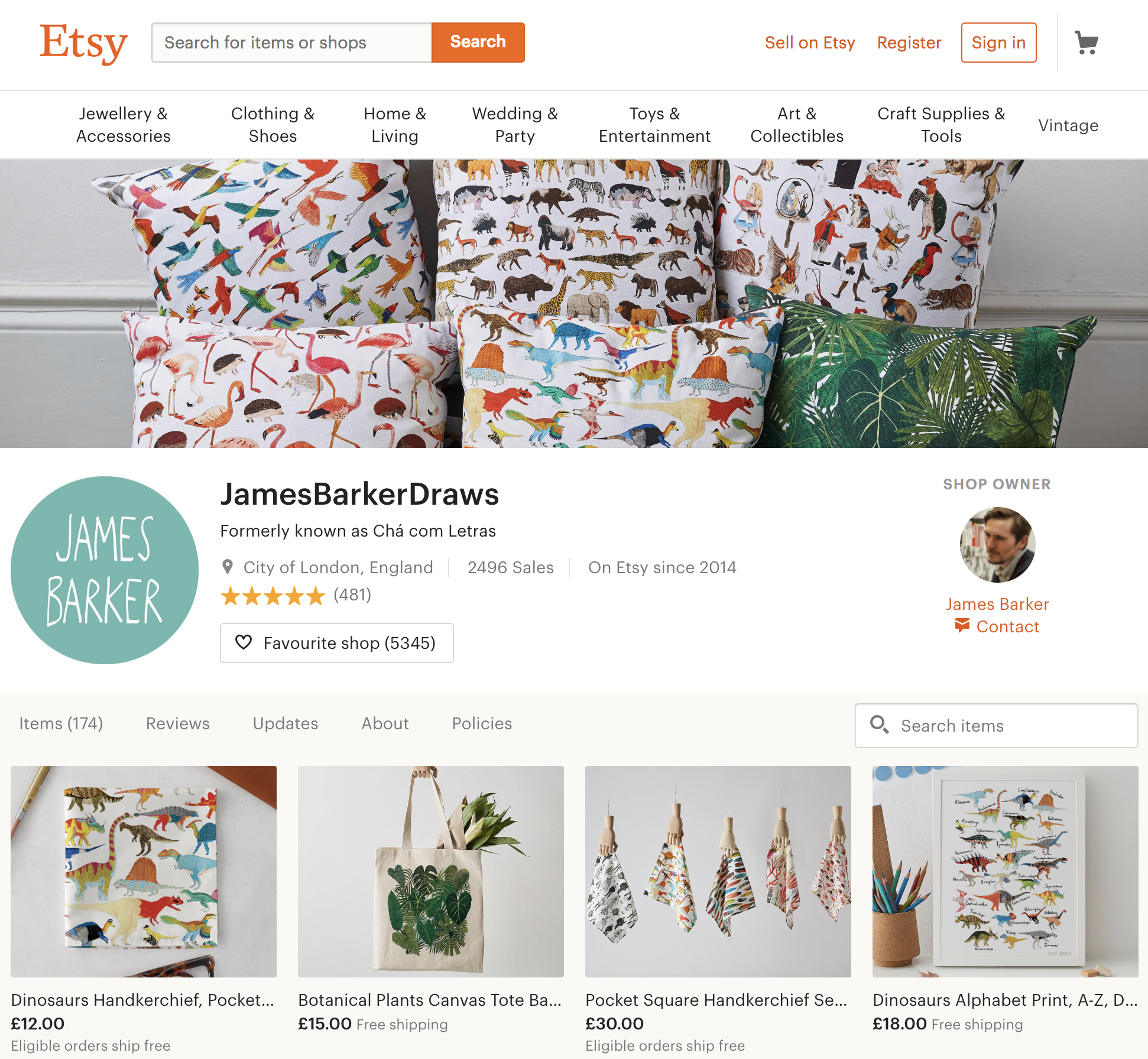
For example, Etsy charges $0.20 per listing and also takes 5% of the total transaction cost, including shipping.[*]
Whereas eBay offers users up to 20 items a month for free, with each following item you list costing $0.35 to list. EBay sellers also pay 10% of the final transaction value back to the company.[*]
The Pros Of C2C Ecommerce
-
Reach a wide market: Using platforms like Etsy and eBay to sell products enables C2C sellers to reach a wide audience without having to do too much marketing.
-
Low cost: Most C2C platforms will charge a listing fee for each item, and then take a percentage of the final sale, but these costs can be relatively low when you consider you’re not paying for your own domain, storefront, or advertising.
-
Selling directly to customers: This often means the seller is able to keep most of the profit, and the customer can get a better price than buying through an online store that would likely add a markup to each product it's selling.
The Cons Of C2C Ecommerce
-
Payments: One of the biggest challenges for C2C businesses is taking payment — often sellers don’t want to send the product until the payment is processed, and buyers expect shipment right away. Though selling through sites like Amazon and eBay or using a service like PayPal alleviates this issue for most sellers.
-
Lack of control: When you’re selling your products through third-party sites, you have little control over the design and layout of your product pages. You’re also susceptible to pricing and cost changes with little notice.
C2B: Consumer-to-Business
C2B is among the least discussed types of eCommerce business, but that doesn’t mean it isn’t an area filled with potential.
C2B is when a customer sells a product or service to a business. And the C2B model has really come into its own over recent years.
Where the relationship between businesses and customers used to be a one-way street, with businesses selling to customers, we’re now seeing customers transform into businesses of their own.
For example:
-
Individuals can now offer goods and services to businesses through platforms like UpWork and Fiverr.

-
Clothing companies may work with bloggers and influencers to promote a new product (where the customer is being paid by the business)

-
Affiliates enable customers to make revenue by adding links to their website
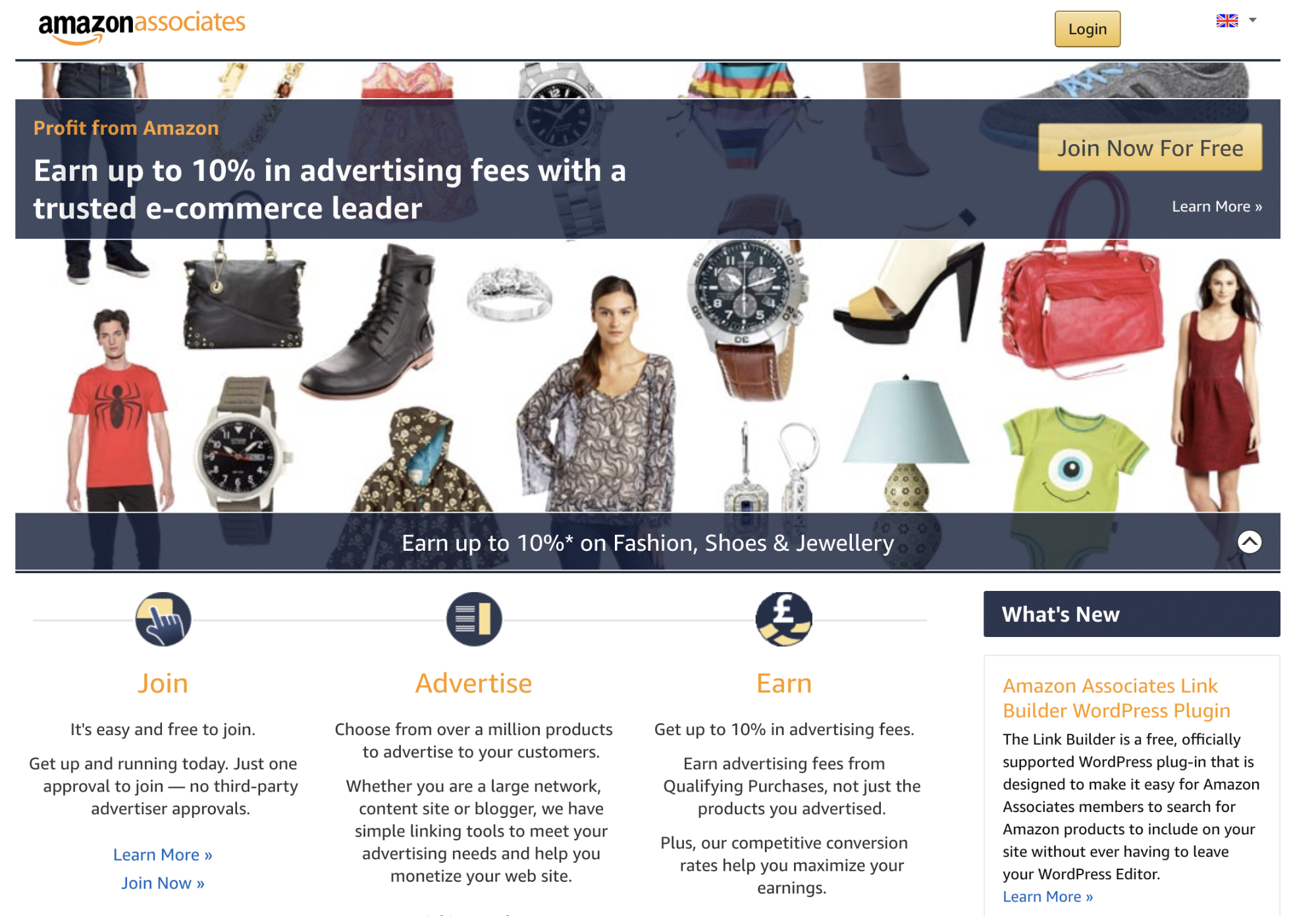
The Pros Of C2B Ecommerce
-
You don’t need to manage stock: With C2B, you’re helping a business to sell their products and service — often through sponsored posts or affiliate links. As such, you don’t have to worry about inventory management or anything after the sale is made.
-
Low investment: You don’t need to spend any money buying stock or getting a store set up.
-
Flexibility: No worries about customer support times or being online 24/7. Set your own hours and work from any location.
The Cons Of C2B Ecommerce
-
You need high traffic: Traffic is often the key to success in this type of eCommerce business. Only a small percentage of visitors will go on to make a purchase from the business you’re working with, so you’ll need a ton of traffic to make it worthwhile.
-
Low revenue per sale: In some cases (affiliate marketing), as you’re only taking a small percentage of revenue from each sale, you need volume to make this viable. For example, Amazon will pay ~10% for each sale, so a DVD purchased for $9 will only yield $0.90 for you.
What Are You Selling?
Now that we’ve covered the types of eCommerce businesses you could start and who you might be selling to (businesses or customers), it’s time to think about what you’re actually selling.
Physical Products
This is eCommerce in its most traditional form: Selling physical products via an online store. Physical goods can be sold to both businesses and customers.
For example, Bushwick Kitchen sells hot sauce directly to customers:

Whereas BuySwings sells playground products and accessories to businesses:
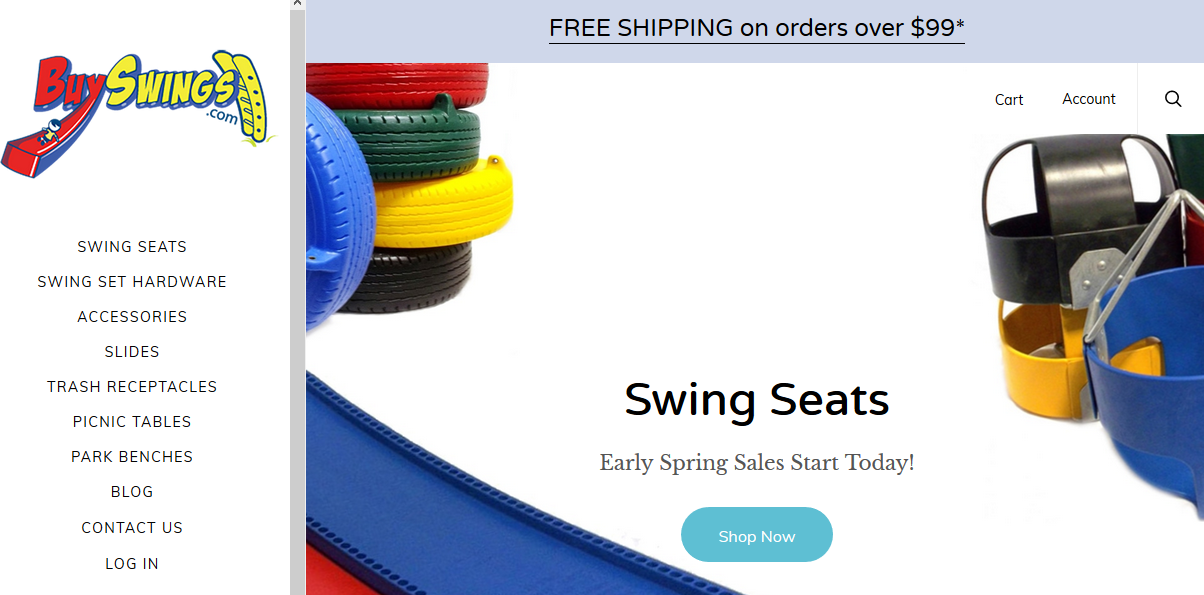
Though selling physical goods is the most traditional form of eCommerce, it’s not without its issues. When you’re selling a physical product you have to consider challenges such as shipping and handling fees, as well as storage costs and dealing with returns or faulty goods.
There are plenty of positives to selling physical goods too, including:
-
The perceived value of physical goods is often higher, and very few customers are skeptical about parting with cash for a physical product.
-
It’s sometimes easier to show how a physical product will deliver value, for example, you know how a frying pan might help your cooking skills, whereas a digital download on how to cook in a pan might feel a little riskier.
Digital Products
Since iTunes revolutionized music sales, customers have adapted to paying for digital-only products. We’re now seeing many creators and sellers driving revenue from selling products like eBooks, courses, music, and multimedia content.
The Drum Broker sells hip-hop drum samples as digital downloads via its eCommerce store:

In the C2C space, Going Whole sells a six-week course on transforming your health and eating whole foods via an online course platform Podia:[*]

There is plenty of upside to running a digital product eCommerce store — especially when it comes to your inventory. When you’re selling digital products you don’t need to worry about inventory, storage or shipping costs. Plus your customer can receive their product instantly.
On the flip side, the digital product space can be highly competitive so you need to focus on ways to make your product stand out such as building your brand, or adding value to your purchase through additional bonus content. Digital products are also open to piracy as it’s hard to ensure people who purchase the product don’t share it with others for free.
Services
You can also sell services as part of your eCommerce business model. Services could include content production, web development, research, marketing and even offline services such as cleaning and office management. Selling your services online can help to boost awareness of your business, and make handling payments easier than following more traditional offline processes.
For example, on marketplaces like Fiverr, you can hire people to help complete tasks and provide a service for your business:
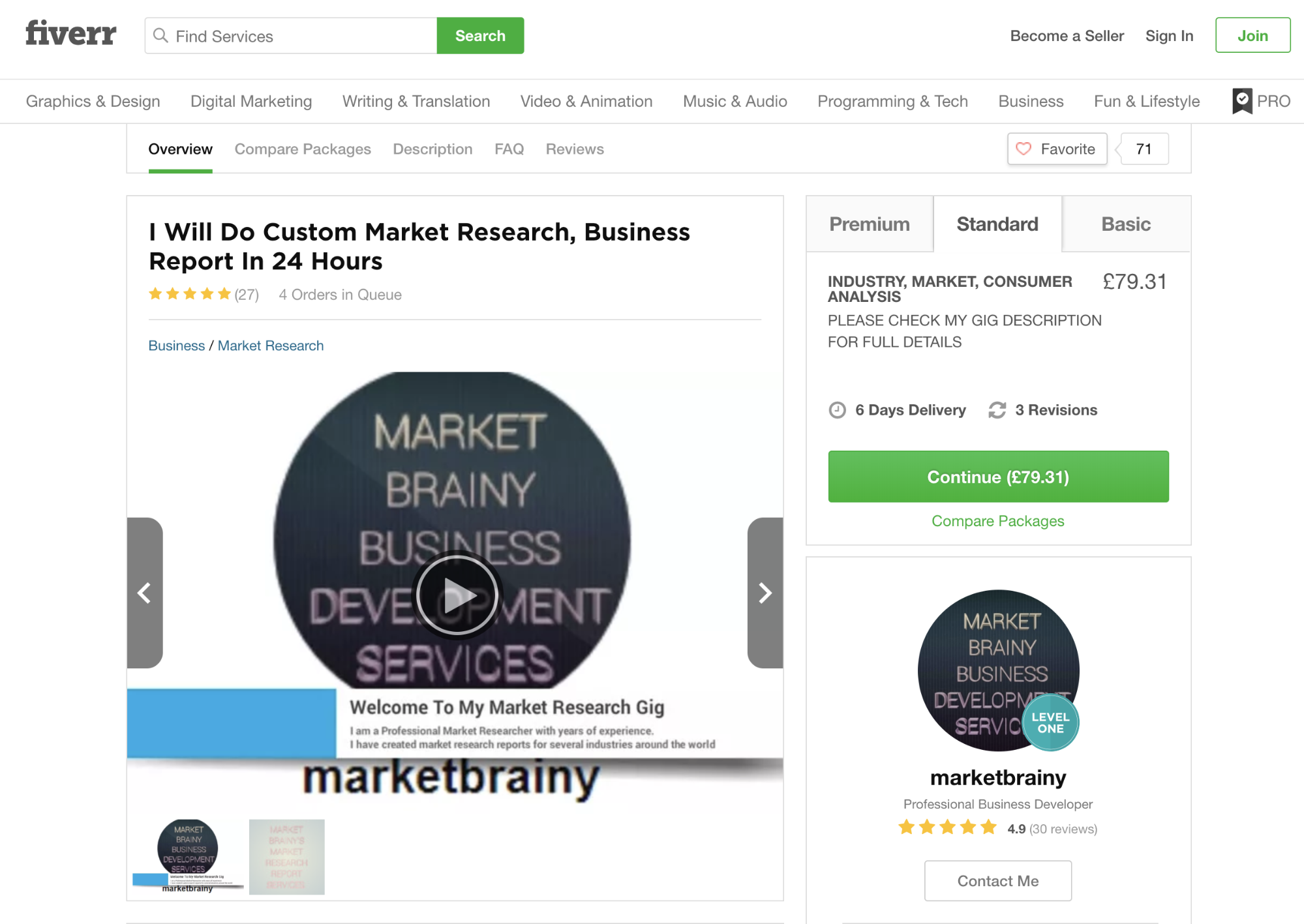
What Product Model Should You Use?
Once you’ve decided on your product, you should also think about whether you’d like to focus on selling one particular product, a range of products, or cover a range of product categories.
Single-Product Businesses
Single-product eCommerce businesses focus all their efforts on selling one flagship product. This can work really well for a business that’s new to market and wants to keep a narrow focus on driving sales in a specific niche.
For example, Fly Pedals sell pedal adapters for bicycles to convert a road or mountain bike for casual riding:
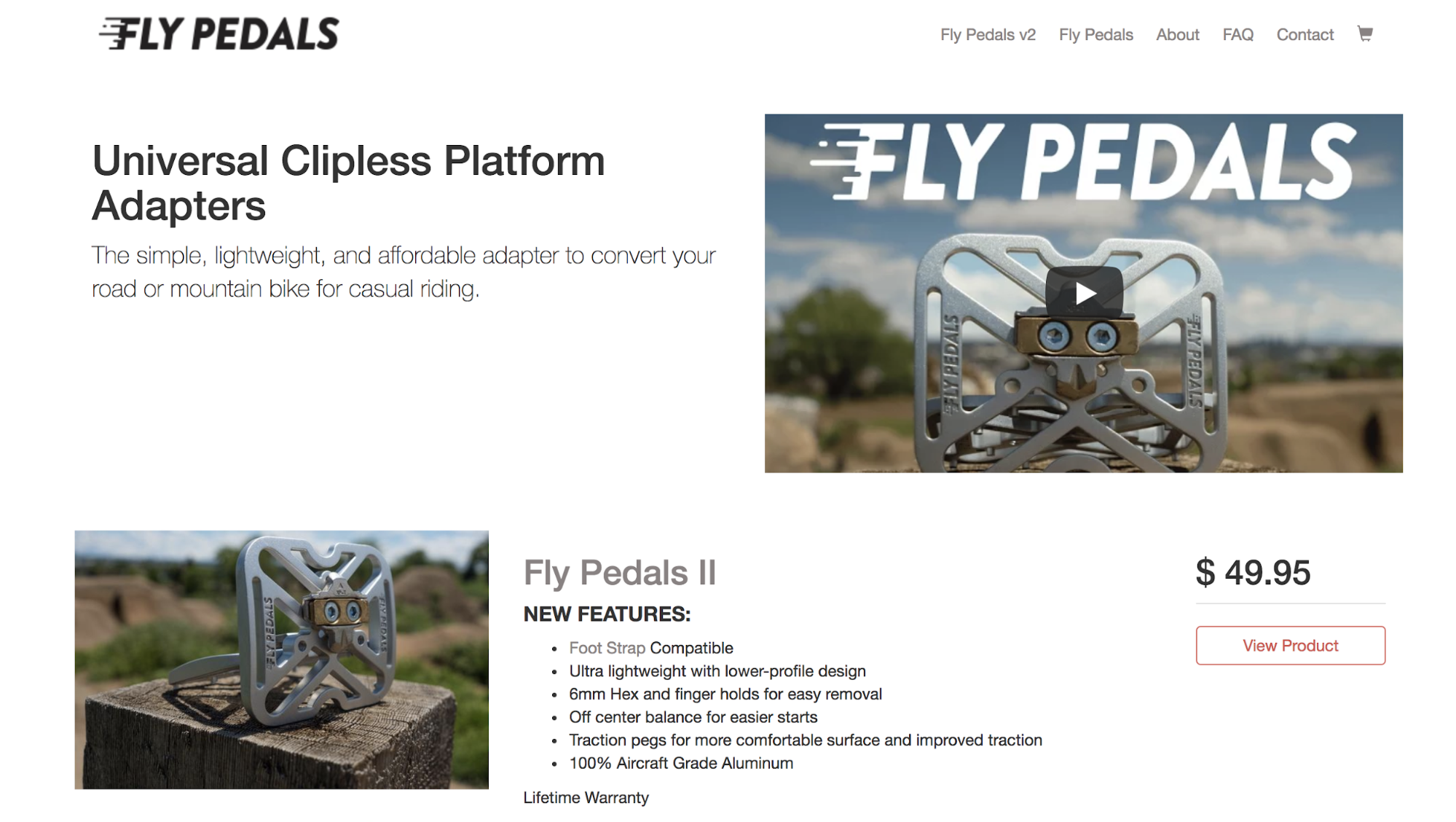
Focusing your eCommerce business on one product lets you concentrate on your target market and the problems your product solves.
This approach often works best for a new company that wants to bring a brand-new product to market in a space where there is little competition.
Often, as they grow, single-product eCommerce businesses will expand to sell multiple products. For example, Bushwick Kitchen started out selling its unique, spicy honey, and then expanded to sell multiple types of hot sauce after their initial success.

Multi-Product, Single-Category Businesses
If you want to sell more than one product, focusing on a single niche or category is a good way to go about it. With this approach you can sell several products and also benefit from repeat business form returning customers.
Examples of multi-product, single-category businesses include Beardbrand, who sell multiple products within the male grooming niche:
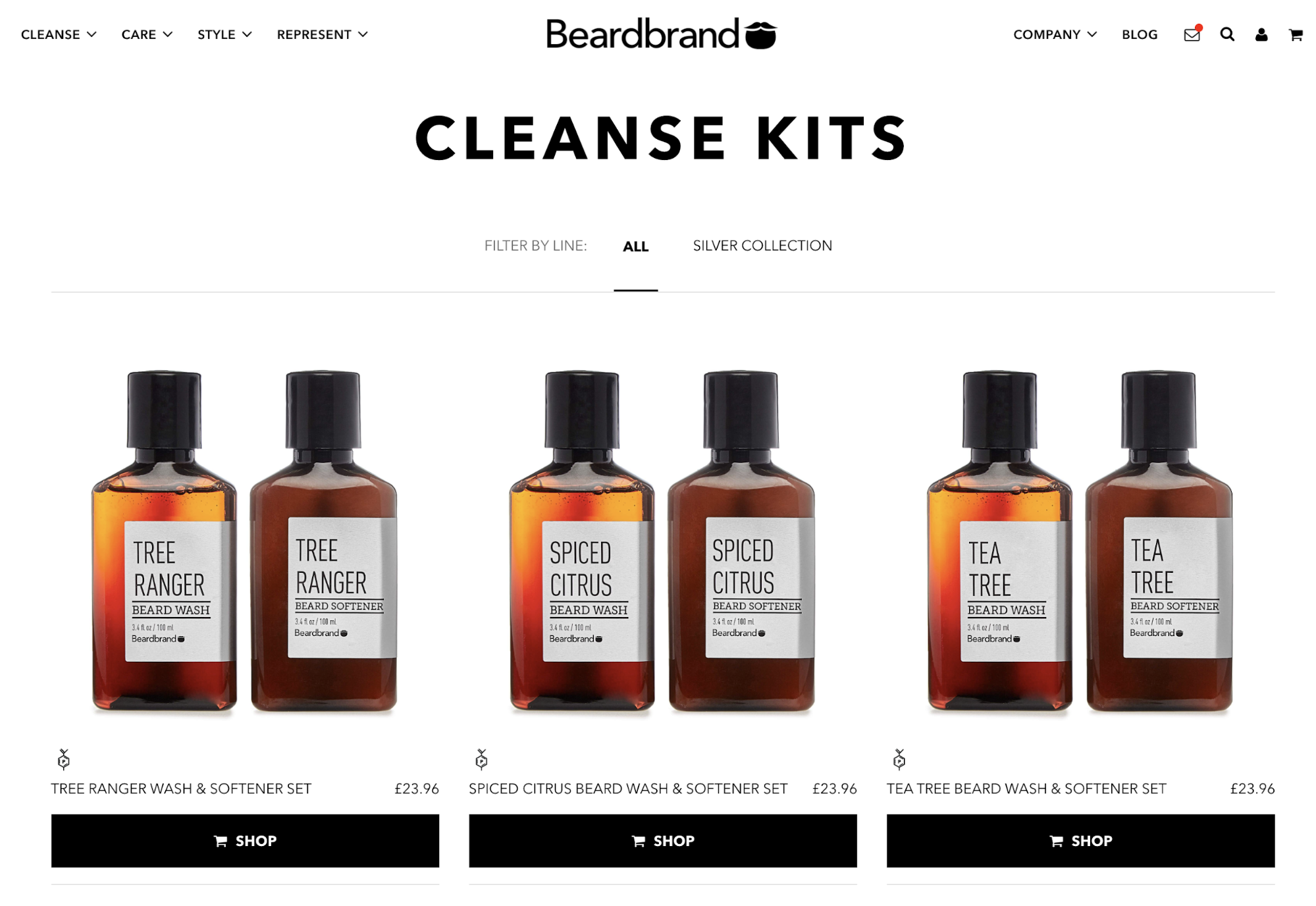
Another example of a multi-product, single-category businesses is Paper & Camera. Paper & Camera sells multiple Photoshop templates (digital products) in the photography niche:

In the C2C and C2B space, there are marketplaces like Envato that enable customers to sell digital downloads (like audio files, After Effects templates, and WordPress themes) to both businesses and customers:

Multi-Category Businesses
Multi-category eCommerce businesses often start out as single-product or multi-product, single-category businesses and expand as their revenue and customer demand grows.
For example, way back in 1995, Amazon started out as a book marketplace:
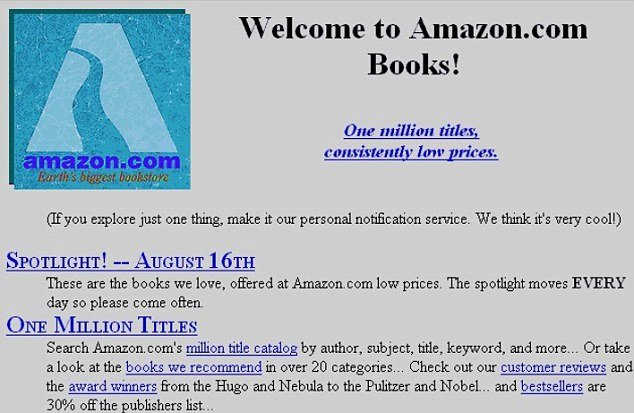
And now it sells millions of products across almost every category you could think of:
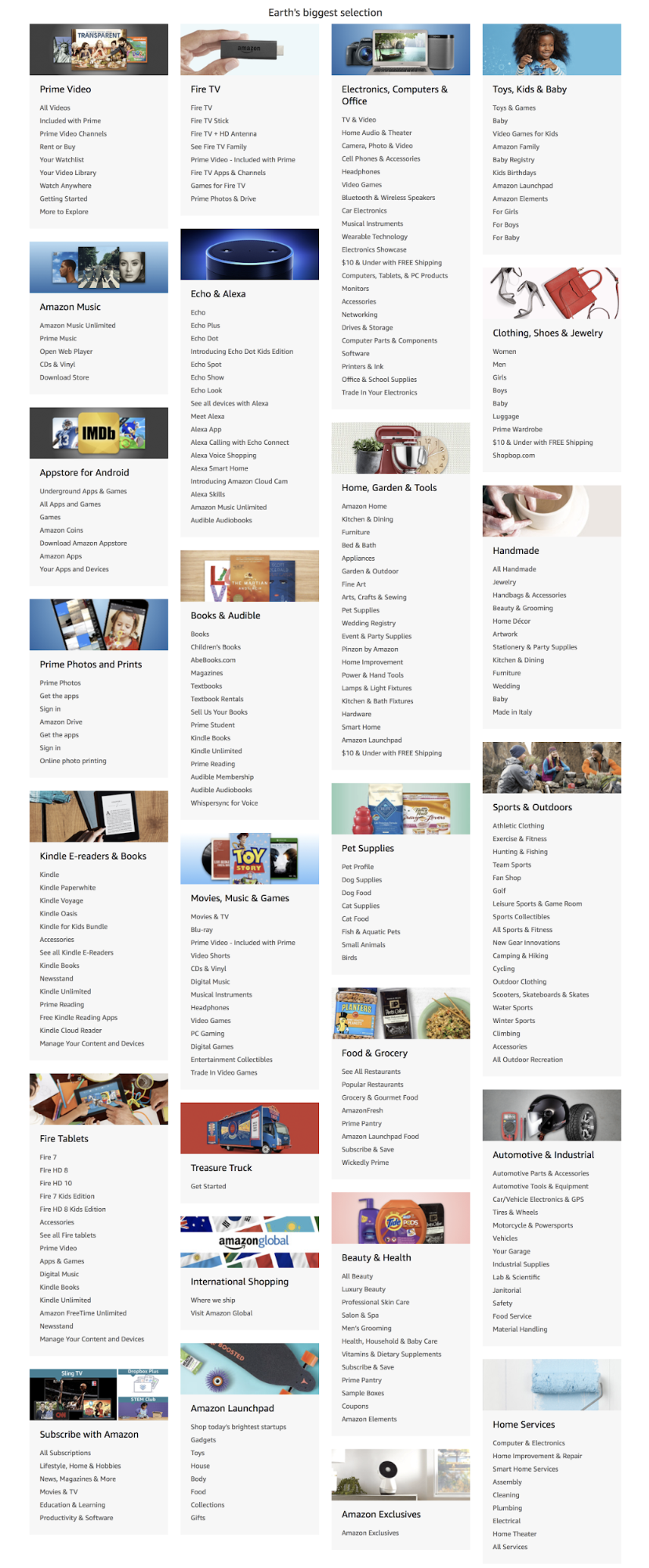
Other examples of multi-category businesses include:
Mountain Warehouse, a company that sells products across multiple categories in the outdoor niche:
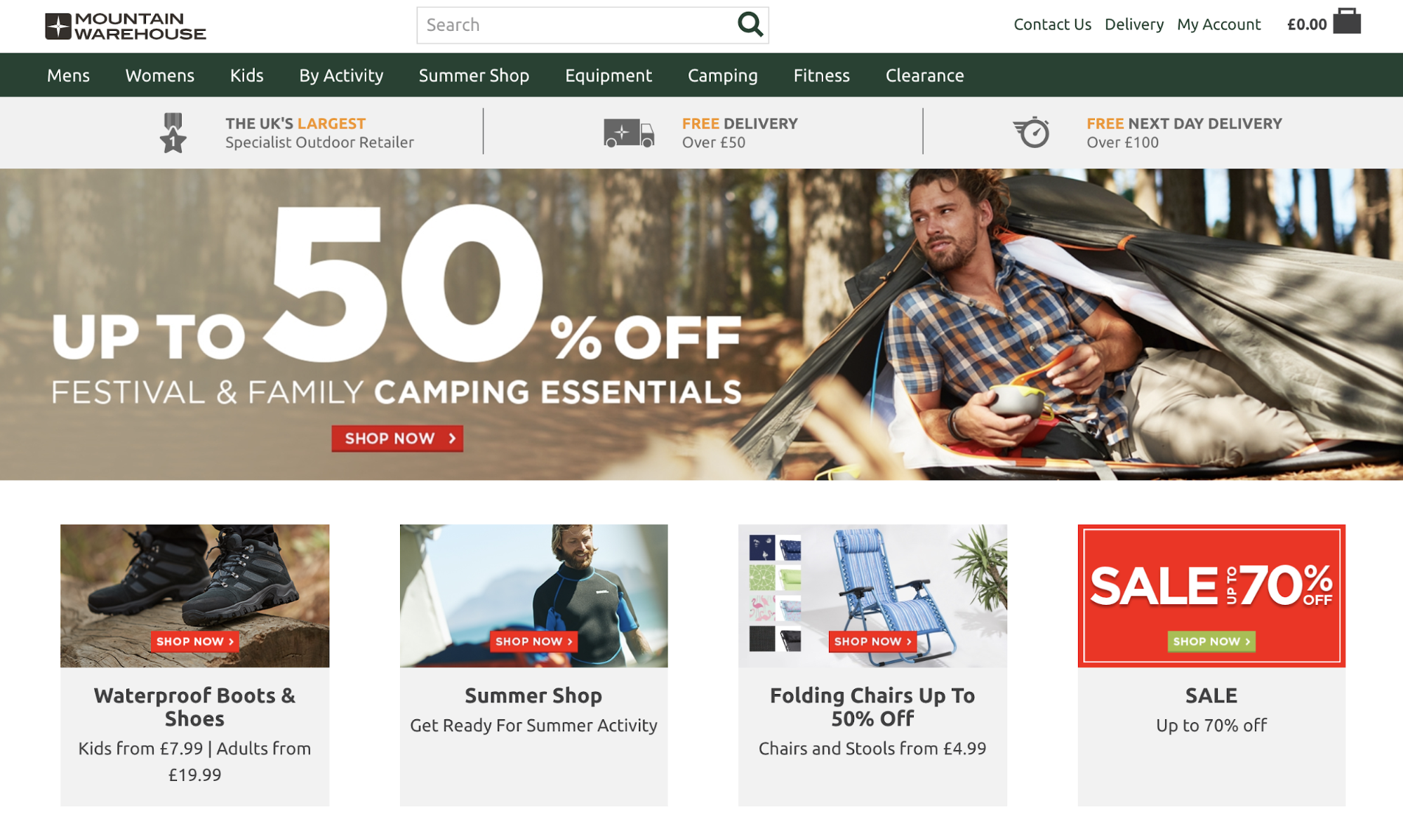
ASOS, a clothing store selling products across multiple categories for both men and women:

As your business grows you can add new product lines and categories. For example, Mignon started out by selling kitchen products, and later expanded to include other types of homeware products:[*]
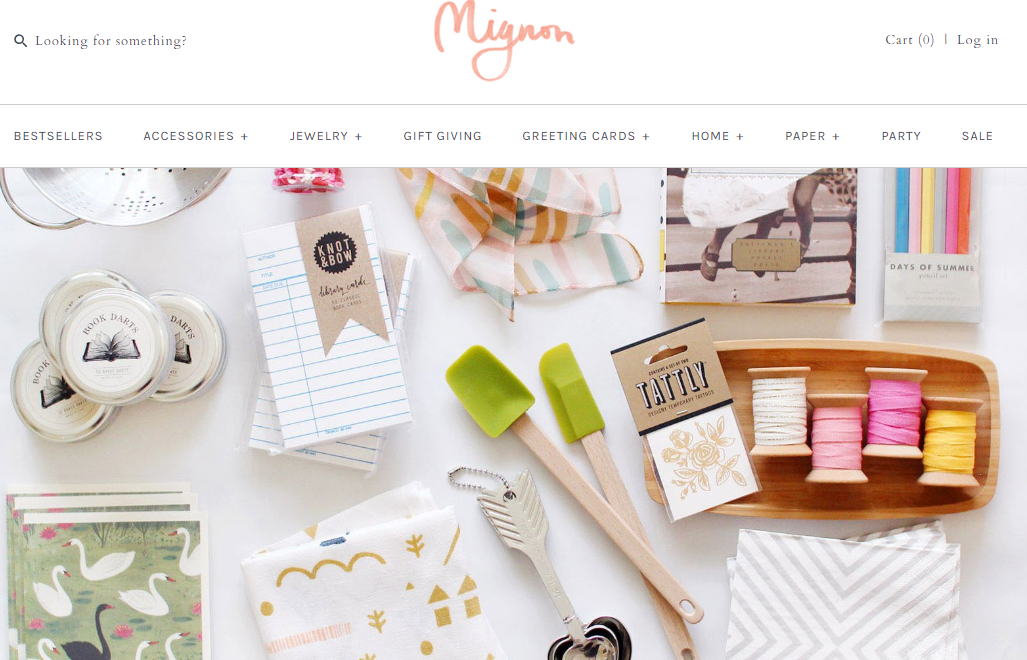
Subscription Businesses
The eCommerce subscription space has grown significantly over recent years with the market growing by more than 100% a year over the past five years.[*]
With over 150,000 subscribers, Birchbox — a subscription box for beauty products — is one of the most well-known subscription eCommerce businesses:[*]

When a customer subscribes to Birchbox they receive a personalized mix of makeup, hair, skincare, and fragrance samples for $10/month.
And you can now get subscriptions for all kinds of eCommerce companies.
Bloom & Wild offers flower subscriptions from £18 per month:
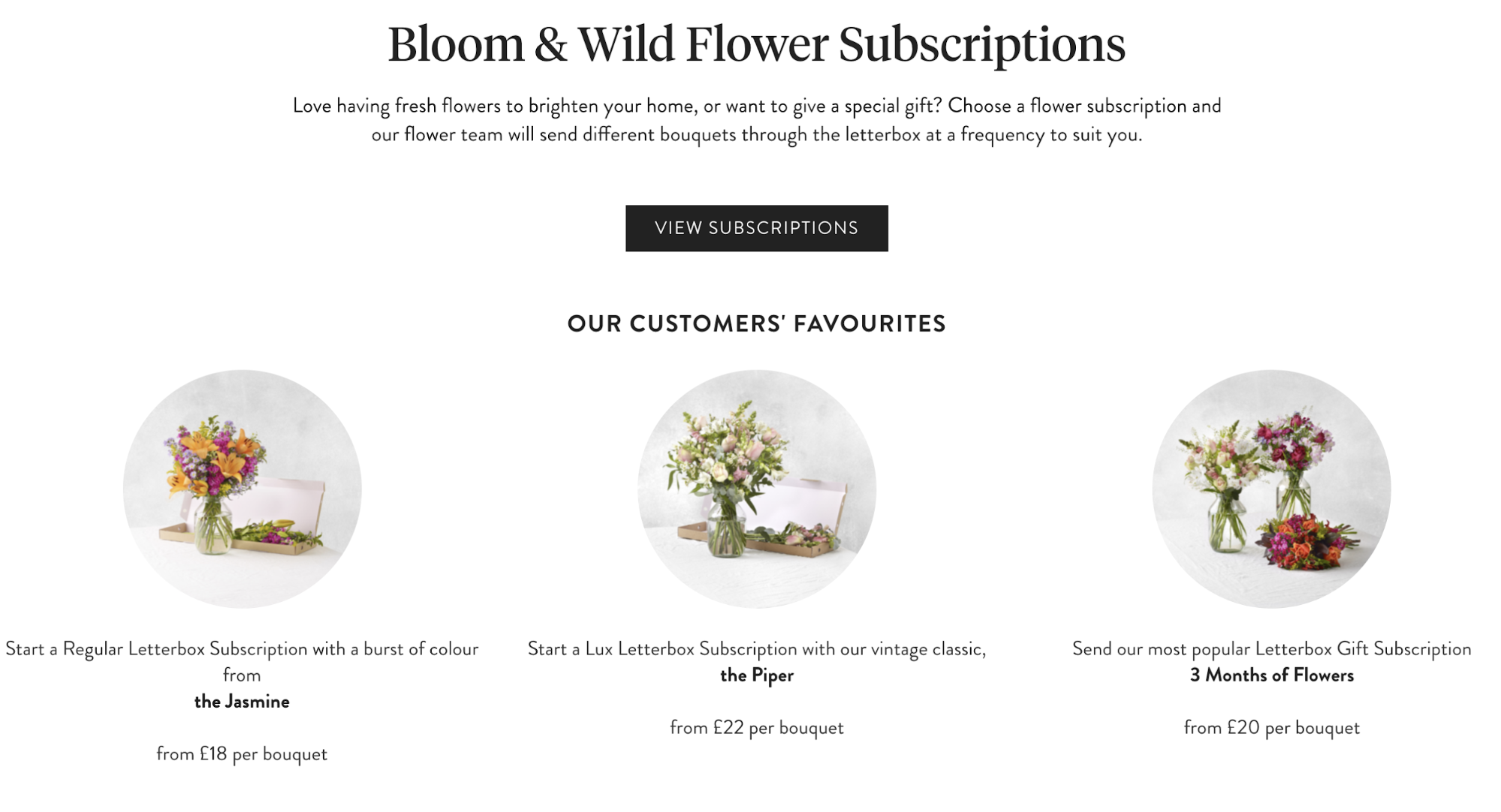
Bluum offers a selection of baby products each month:
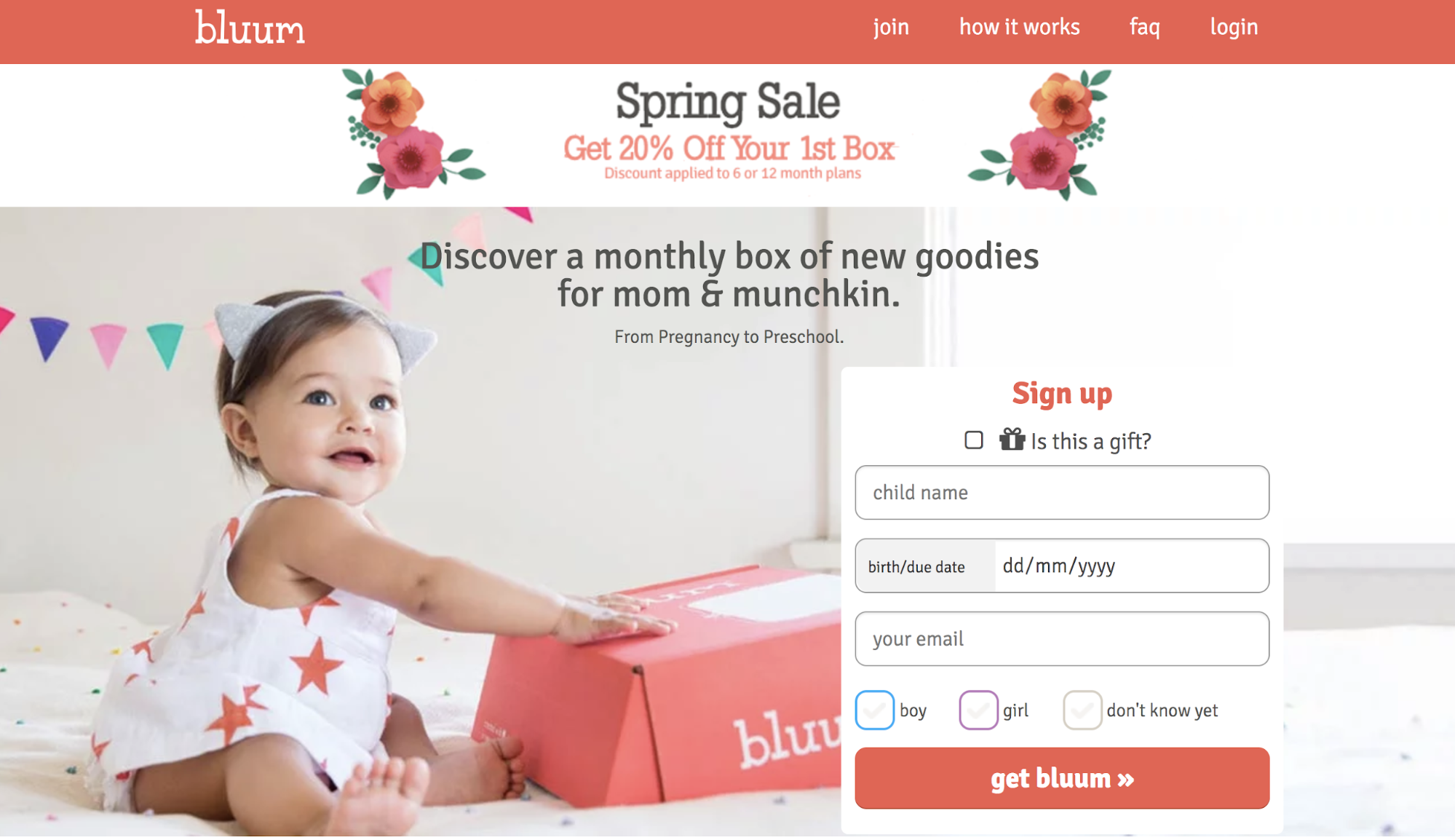
Beer Hawk offers a Beer Club where customers receive a range of new beers each month:

The eCommerce subscription model has benefits for both the seller and customer. From a seller perspective, you have predictable monthly revenue coming in and you can easily predict demand and volume.
From a customer perspective, it’s all about convenience. When a customer joins Beer Hawk's Beer club, they receive new beers each month to their door. They don’t have to spend time reading reviews or deciding what beers to choose — and they don’t even have to spend time checking out and paying each month. Once the subscription is set up, everything is done for them.
It’s not all plain sailing though, there are plenty of challenges for anyone who chooses the eCommerce subscription model.
Sometimes you might suffer from ‘subscriber fatigue’ and feel bored once they’ve received a subscription for a number of months. It’s a constant challenge for subscription companies to keep their offering interesting.
How Will You Stock Your Store?
Next you need to figure out how you’ll handle your inventory and answer the question: “How will I acquire products?”
There are various ways to can find and acquire products for your eCommerce business, and figuring out what works for you will help you to shape your business model.
Here are a few ways you can acquire products to sell:
Dropshipping
Essentially, dropshipping is selling products that you don’t physically stock.
If you’re using dropshipping, you sell products that are stocked by another company that manufactures or warehouses products. That company will fulfill the order.
Here’s how it works:
-
A customer places an order on your online store.
-
The order is forwarded over to your dropship supplier.
-
The dropship supplier sends the customer their order (on behalf of your company).
The below graphic from A Better Lemonade Stand highlights the process:[*]
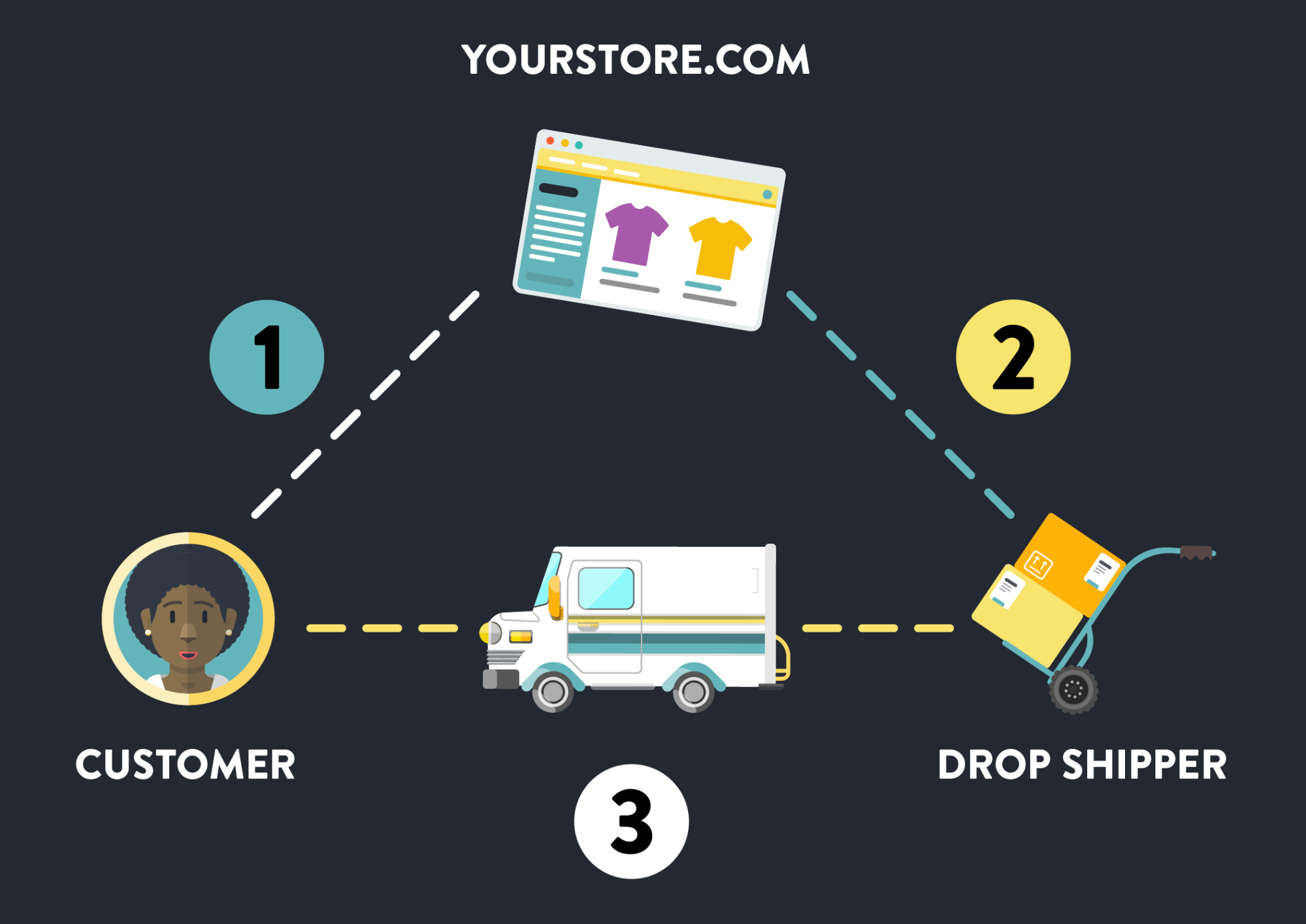
With dropshipping you don’t ever have to worry about purchasing and managing your inventory, so you can get started with little upfront costs.
When you’re not stocking the products yourself you also don’t have to worry about warehousing costs or staying in one location — all you need is your laptop and a WiFi connection.
The profit margins can be slightly lower with dropshipping businesses, and you give up some control over the products you’re selling, so you can’t always deliver the experience you might want to provide your customers.
So Aesthetic is an eCommerce business that generates thousands of sales per month and fulfills each sale with dropshipping:[*]

When So Aesthetic founder Justin Wong started the store, he was still working full time and grew the business to $12,000 in sales per month before he quit his day job.[*]
Make Your Products
Making your own products is a common way to get started in the eCommerce space — especially for people with a passion for the products they’re creating.
This can be one of the more time-consuming ways to acquire stock for your store, but it can also create a feeling of value and worth around your products as customers will know each was crafted by a real person rather than a machine.
If you start making your own products, you don’t have any manufacturing or supplier costs, and the startup costs will be limited to the raw materials and tools you need to make your product.
Many people who make their own products start out in the C2C space, selling their products via third-party platforms before they expand and launch their own store.
This is exactly what happened to Paul Cunningham who started out selling leather sports goods on Etsy before launching Leather Head Sports:

Wholesale
Wholesaling is one of the more expensive ways to fill your eCommerce store with products, but it can also be super rewarding ($$$). With the wholesale approach, you buy your inventory upfront from a supplier, and then you sell to customers for a higher rate.
You might buy 500 T-shirts from a supplier for $15 per unit, but then sell those T-shirts for $30 per unit on your eCommerce store. If you managed to sell all the shirts, you’d make $15,000, doubling the $7,500 you spent purchasing the stock from the supplier. If you don't sell all of the shirts, your profit is less, and you still need to store that inventory.
An example of a wholesale success story is Watch Outfitters — an eCommerce store with more than $13,500 per month in revenue. Watch Outfitters source watches from vendors in the U.S., Europe, and Asia and sell them via an online store:[*]
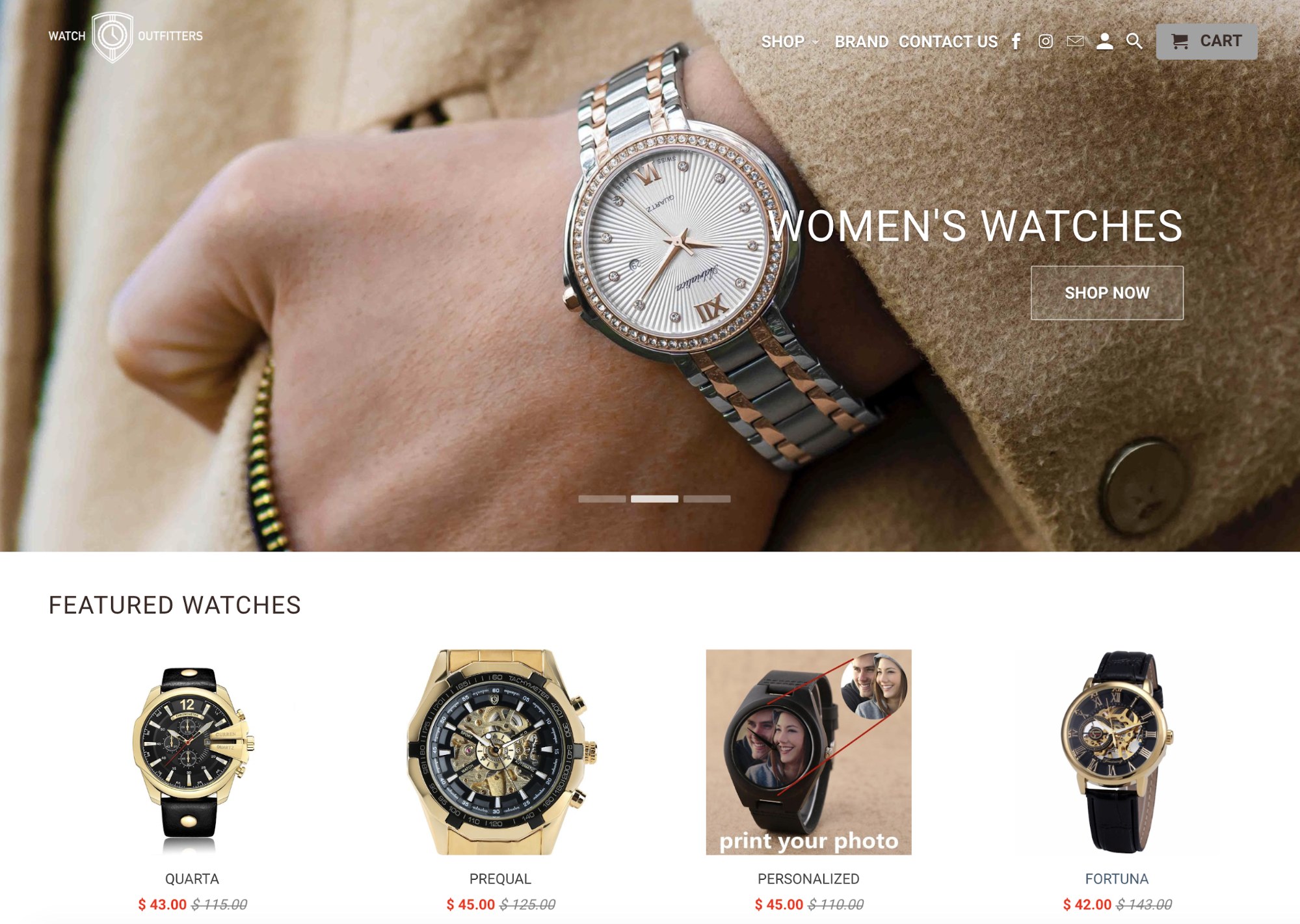
Manufacturing
If you want to create something a little more unique, you could find a manufacturer to produce products for you.
This approach can prove quite costly, especially if you want to manufacture your products in the U.S., but it can pay off if you want to create a product unique to your brand.
UgMonk has shipped tens of thousands of products to over 60 countries around the world. When founder Jeff Sheldon first started out he turned to manufacturers to produce high-quality screen-printed T-shirts for his brand.[*]
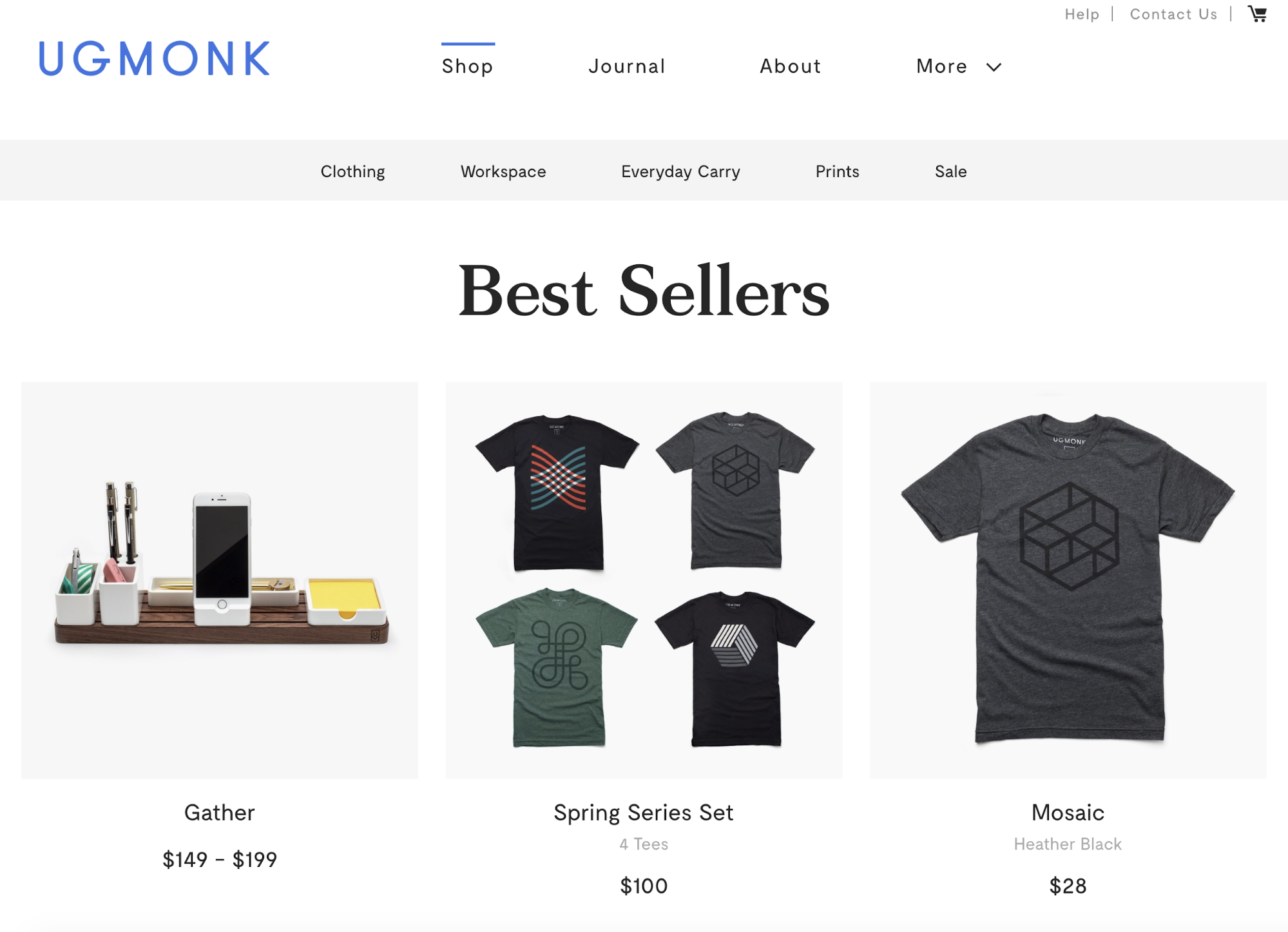
3 Steps To Building Your eCommerce Business Model
So what have we learned in this article…
Here’s a quick recap on how to make the perfect eCommerce business model:
1. Who Are You Selling To?
First, you need to figure out what type of eCommerce business you want to build, and who will you be selling to.
Do you want to be a:
-
B2B – Business-to-Business
-
B2C – Business-to-Consumer
-
C2C – Consumer-to-Consumer
-
C2B – Consumer-to-Business
2. What Are You Selling?
Are you looking to sell digital products, physical products, or services?
Will you focus on one product, multiple products to one niche, many products across multiple categories, or a subscription model?
Answering these questions will help you to figure out exactly what you want to sell.
3. How Are You Getting Your Stock?
Once you’ve nailed down what you’re selling, it’s time to think about stock and how you’ll fill your inventory. Maybe you’ll make your own products, get them manufactured, or even dropship your way to success.
Once you’ve decided on these three key things, your eCommerce business model is complete.
For example, your business model could be:
-
A C2C company selling blankets (a physical product) that you make yourself.
-
A B2B subscription company selling office supplies that you dropship.
-
A B2C company selling headphones that you manufacture.
Now don’t waste any time; use our eCommerce business model calculator below to pick the business model that’s right to start growing your business.
Add A Comment
VIEW THE COMMENTS